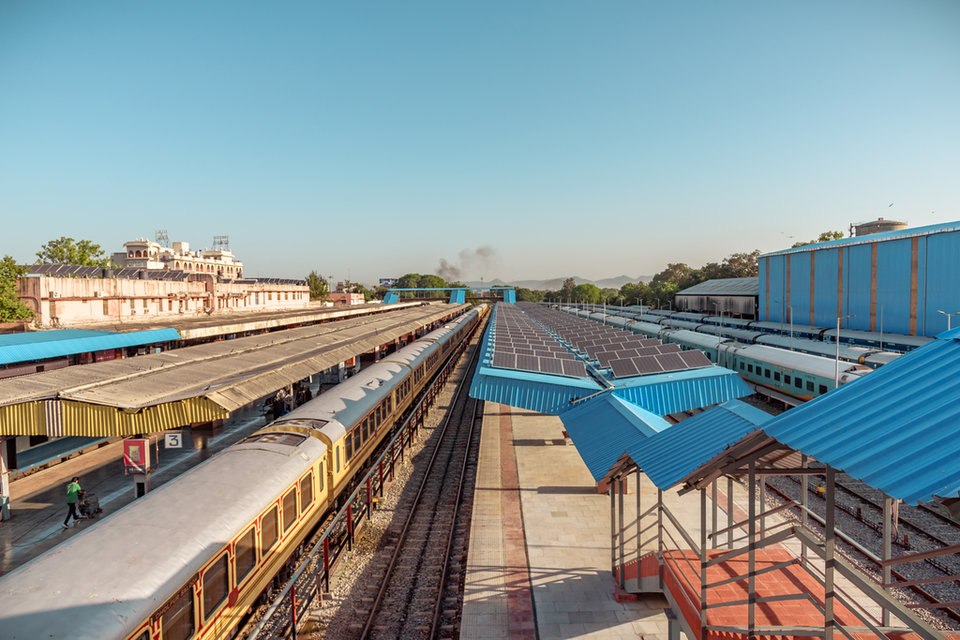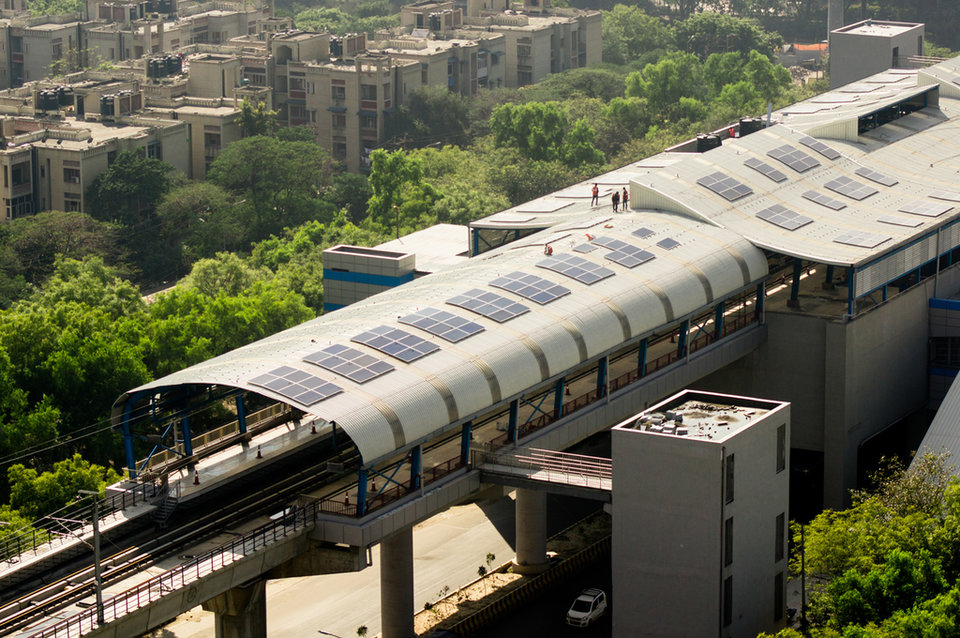Demand for traction power on the world’s rail networks is escalating and many traditional grids are at full, or near, capacity.”
Power surge: using solar PV for traction and grid supply
Demand for traction power on the world’s rail networks is escalating and many traditional grids are at full, or near capacity. Using solar PV power is potentially a neat solution that uses photovoltaic panels in close proximity to (or in the case of Bankset’s solution, directly on) rail lines to generate electricity and transmit it directly into system as traction current, and/or distribute it to the grid.
According to a 2017 report into solar PV rail applications by Imperial College in London, this could take advantage of a coincidental match between the peak generating time for solar and a peak demand for traction current, while also bypassing current problems in areas of limited grid capacity.
In addition, solar PV arrays typically output DC power at 600–800V, while electric rail operates at 750V, meaning that the cost of connecting solar generation to DC traction networks – such as those seen in urban rail networks throughout the UK – should be competitive with grid connection costs, potentially eradicating the need for public subsidies.
“We currently supply power to overhead lines in all current options – AC and DC, low, medium and high voltage, HVDC – to train stations, and directly to the consumer and buildings alongside long-distance rail lines,” explains Isoti.
“We use simulation software designed by engineering consultancy Mott MacDonald to adjust loads and power supply from Bankset energy rails. In Q4 2019, we look forward to a first 15km Bankset rail line track and to powering a battery train for a full 24 hours.”
Bankset claims its panels are built to withstand the stress of trains travelling over them, and uses robot trains to clean them with pressurised water as part of its operations and maintenance regime.

Image: Amit kg / Shutterstock.com
Full steam ahead: India leads the way on renewables
India is another rich potential market for Bankset’s solar PV panel technology, having blazed a trail in the sphere of renewable energy innovations, particularly those aimed at the transport sector.
Stations in Indian cities such as Mangaluru, Thiruvananthapuram and Jaipur are partially powered by solar and wind energy, and in 2017 Guwahati in the north-eastern city of Assam, a major hub serving around 20,000 passengers every day, became the first station in India to be 100% solar-powered.
The station’s grid-connected rooftop solar panels have a capacity of 700KW, enough to electrify the station, coach depot and the Northeast Frontier Railway zone. The project will help the network save around Rs67.7 lakhs (almost $100,000) a year in electricity bills and constitutes a major milestone on Indian Railways’ journey towards meeting 25% of its power demand with renewables by 2025.
In July of the same year in suburban New Delhi, Indian Railways’ unveiled its first solar-powered train, the Diesel Electric Multiple Unit (DEMU). Pulled by a diesel locomotive, the coaches are fitted with rooftop solar panels that power lights, fans and information display systems. Each train with six solar-powered units could save around 21,000L of diesel every year, worth roughly Rs12 lakh.
These may appear to be only small, incremental steps, but they take on additional significance when one considers that, as the operator of Asia’s largest rail network, Indian Railways is the single largest consumer of electricity in the country, accounting for almost 2% of India’s total power consumption.
In 2015, the service reportedly spent Rs16,395 crore ($2.5bn) on diesel and the Ministry of Railways is hoping more solar power will equate to Rs41,000 crore ($6.31bn) in savings over the next decade.
Indian Railways is working with the UN Development Programme (UNDP) to deploy solar PV at 8,500 stations and the Delhi Metro has contracted developers to build the “world’s largest single-site solar project” to supply 90% of its daytime operating electricity via the standard distribution network.
In Australia and China, we look forward to 2,000km freight lines powered with Bankset solar systems in the near future.
Panels made from silicone and aluminium can be attached to the existing concrete, wood and steel sleepers
Political will: barriers to adoption of renewable rail energy
According to Imperial College’s aforementioned ‘Riding Sunbeams’ report, there is enormous scope for solar traction power on railways around the world. In tropical nations with year-round sunshine, new electrified rail lines could even run exclusively on solar power and storage, with no need to rely on local grids.
The report also points out that solar traction power would be cheaper for rail companies than grid supplied alternatives, and that cost trends indicate this gap will continue to widen into the future.
According to Isoti, the technology that allows rail networks to be run on renewables such as solar PV is increasingly refined; what is missing is the political will to eschew expensive legacy power systems.
“Technically, it is perfectly feasible,” he confirms. “We believe that solar panels on rails are able to provide 30% of national grids’ 24/7 energy load requiredments, and that this is now the most cost-effective solution,” he says.
“It is a political issue, as most of the rail network belongs to regions and respective states, many rail lines are privatised. In Australia and China, we look forward to 2,000km freight lines powered with Bankset solar systems in the near future.”
“This new market estimated at €60bn is now open for development for a national and international infrastructure project,” he continues. “Financially and politically we have very good feedback from open-minded, forward-looking rail companies who want to avoid running up debt.
“Most rail networks are subsidised by up to 35%, and for more than ten years green and sustainable energy has been a priority. In response, we have provided a solution that covers the world’s railway networks and employs innovation to provide operators with a fresh source of income.”
